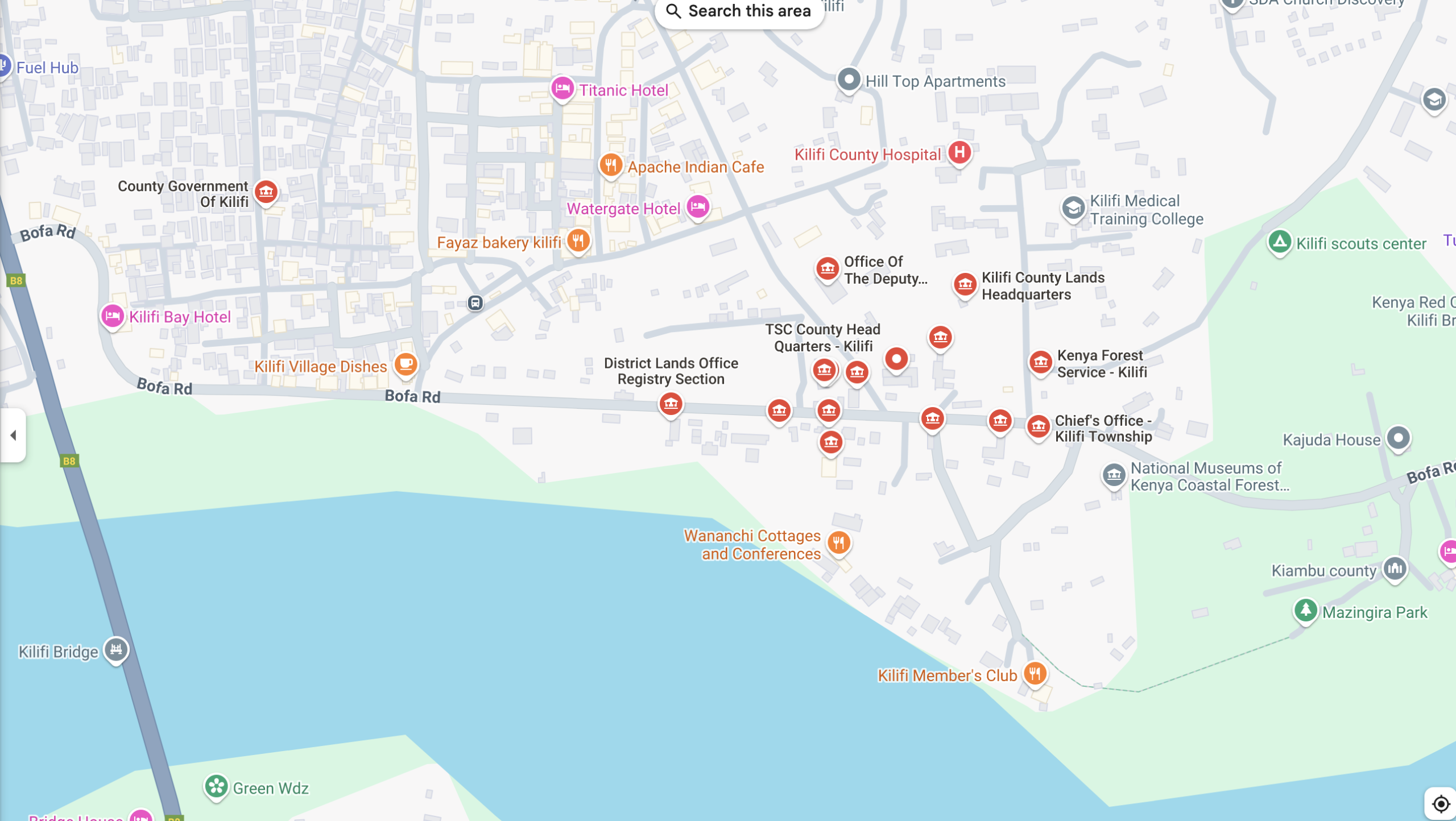The County Government of Kilifi occupies one of the most stunning parcels of real estate in Kenya — right on the oceanfront (or nearest). While the location is undeniably scenic, one must ask: is this the best use of such premium land? Should government offices sit on land that could instead drive tourism, create jobs, and generate long-term revenue for the county?
As Kilifi looks to build a sustainable and prosperous future, it’s time to rethink how this oceanfront property is used. What if this land was converted into a vibrant public-private investment zone focused on tourism, culture, commerce, and community engagement?
🌊 The Missed Opportunity
The current county government headquarters enjoy panoramic ocean views — a luxury that could instead be turned into a major economic engine. Globally, prime beachfront property is rarely used for administrative functions. Cities like Cape Town, Zanzibar, Barcelona, and Miami have long understood that oceanfronts should host hotels, cultural centers, parks, waterfront malls, and marinas — not government desks and file cabinets.
With Kilifi’s immense tourism potential, ocean access, and rich coastal culture, the opportunity cost of underutilizing this space is enormous.
💡 What Kilifi County Government Can Do
1. Relocate Administrative Offices Inland
The county can identify inland land, possibly closer to key transport hubs, for a new, modern administrative complex. This move would free up the beachfront land for more strategic use while making government services more accessible to residents across the county.
2. Establish a Public-Private Partnership (PPP) Development Plan
Kilifi can invite private investors to develop the beachfront land into a multi-use zone — complete with hotels, conference centers, cultural spaces, art galleries, restaurants, and boardwalks. This should be done through transparent bidding and community consultation.
3. Create a Revenue-Generating Tourism Hub
Transform the space into a flagship tourism destination. The county can lease parts of the land to investors or manage sections through county-owned enterprises. Revenues from leases, taxes, and tourism activities would fund public services and development.
4. Preserve Public Access
While commercializing the land, Kilifi must ensure public access to the oceanfront remains protected. Develop parks, walkways, and open cultural spaces that benefit residents and tourists alike.
5. Anchor a Blue Economy Innovation Center
Given its proximity to the ocean, the space can host a Blue Economy Innovation Hub, where entrepreneurs, researchers, and investors collaborate on marine-based solutions — from aquaculture to ocean conservation and coastal resilience.
🌍 Potential Economic Benefits
- Job Creation: Hospitality, tourism, retail, and cultural industries will absorb thousands of youth.
- Higher Property Values: Thoughtful development would increase property values, boosting the local economy.
- Increased Revenue: The county can generate revenue through land leases, tourism levies, and service charges.
- Improved Urban Planning: Moving offices inland allows for more efficient town layout and urban expansion.
🚧 Challenges and How to Overcome Them
- Resistance to Change: Stakeholder engagement and civic education will be key to explaining the benefits.
- Funding the Relocation: Development grants, county budgets, and PPPs can finance the new government complex.
- Regulatory Hurdles: Proper zoning, environmental assessments, and land use approvals must be planned early.
📢 Final Thought
Kilifi stands on the brink of transformative growth. With strategic planning, political will, and community input, the county can convert its most valuable real estate into a magnet for tourism, innovation, and sustainable prosperity. Government offices don’t belong on the beach — people, culture, and commerce do.
It’s time to reimagine Kilifi’s oceanfront as a gateway to opportunity, not just governance.
Tags: Kilifi, County Government, Urban Planning, Tourism, Coastal Development, Blue Economy
Categories: Governance, Economy, Urban Development, Kenya




